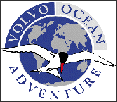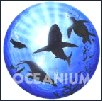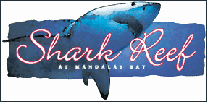|
The Caribbean Conservation Corporation (CCC) released three new satellite tagged green sea turtles from Tortuguero, Costa Rica in September, 2001. This marked the second year of using satellite telemetry to track the movements of turtles nesting at Tortuguero, Costa Rica. Each of the three turtles were sponsored by a different business. Each sponsor funded the cost of a satellite transmitter, materials and supplies for attaching the transmitter and the ongoing expense of retrieving data from a satellite company. All three transmitters are successfully sending back the information they were programmed to collect. Through this research, CCC continues to learn information that will help improve international protection efforts for endangered green sea turtles.
“This is a great opportunity for CCC and the sponsors. It is a way they can get involved in sea turtle conservation and research efforts by supporting a study that also helps raise awareness around the world,” said David Godfrey, CCC Executive Director. “The turtle’s movements are incorporated into CCC’s online education program allowing people all over the world to watch along as CCC discovers where the famous turtles of Tortuguero travel after they leave their nesting beach in Costa Rica.”
|
Once the small transmitters were attached and the turtles returned to the water, signals began being sent to orbiting satellites each time the turtles surfaced to breathe. The data collected by the satellites and downloaded to CCC are telling researchers about the turtles’ locations, dive times and approximate temperatures of the surrounding water. The location data is being posted on digital maps that are regularly updated and available for viewing.
The sponsors of the turtles include two aquariums and a car company. Volvo Cars of North America and the Volvo Ocean Adventure (VOA) sponsored “Freija,” as well as a trip for ten High School students and two teachers to Tortuguero. The students took part in the capture and release of Freija, the first satellite tagged green sea turtle of the 2001 project. VOA is an educational web site developed to focus on environmental issues related to oceans, lakes and rivers during the Volvo Ocean Race. The web site follows the sailboats around the world on their nine-month-long voyage, highlighting hot environmental topics along the way.
The second green turtle released, “Peddel 02,” was sponsored by the Rotterdam Zoo. The Rotterdam Zoo, one of the largest tourist attractions in the Netherlands, is a modern zoo where the visitor can see animals that are housed in enclosures resembling their natural habitats. These habitats or ‘biotopes’ are organized on a geographical basis. The Rotterdam Zoo supports conservation projects, such as CCC’s sea turtle migration tracking program, through the Bernhardine Fund, which is the zoo’s own conservation fund. Support of CCC’s project marked the occasion of the opening of the zoo’s new Oceanium.
The third green turtle to be released, “Mandalay,” was sponsored by Shark Reef at Mandalay Bay, in Las Vegas. Not your typical aquarium, Shark Reef is a total sensory experience designed to transport visitors to an undersea ocean of fantastic sights, sounds and encounters. Featuring dangerous and unusual aquatic animals and fish from the world’s tropical waters, Shark Reef is one of the largest exhibits of its kind in North America. The conservation-minded natural exhibit uses manmade coral and salt water is made by mixing salt with dechlorinated tap water, which contains trace elements found in natural seawater.
CCC would like to thank the sponsors of the 2001 sea turtle migration tracking program!


